
Top 7 Must-Visit Places in Goa for Indian and International Travelers
Goa is a kaleidoscope of sun, sand, and history – a place where adventure-seekers and culture-lovers alike find endless stories around every corner. From the first time I cruised down a winding Goan highway with the coastal breeze in my hair, I felt the excitement that every traveler deserves. Whether you're lounging under swaying palms on Goa's beaches or marveling at centuries-old Portuguese forts, there's an itinerary here for everyone.
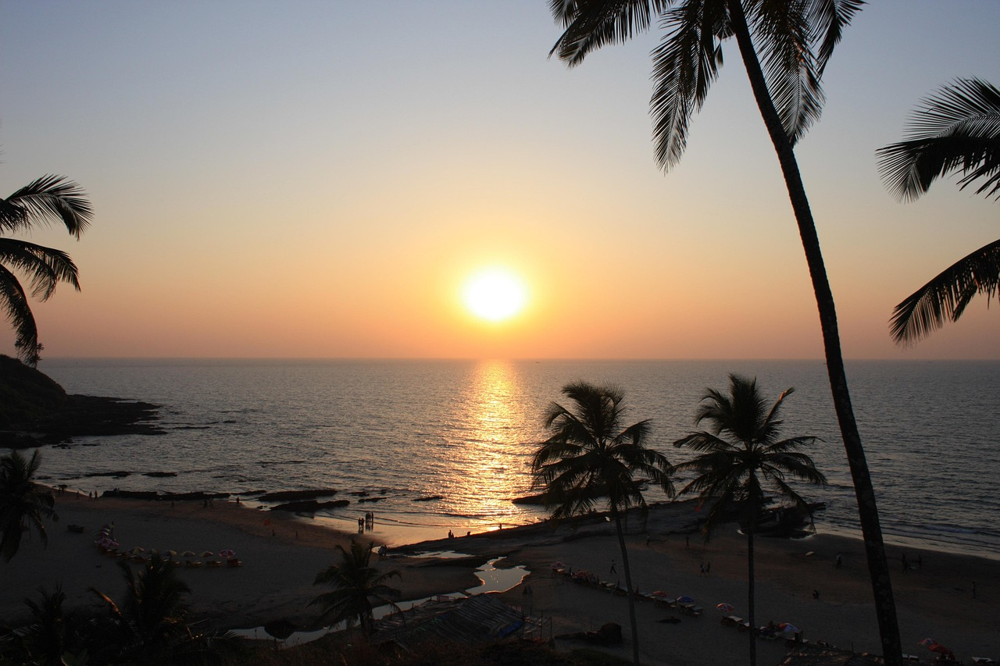
1. Basilica of Bom Jesus (Old Goa)
Stepping inside the Basilica of Bom Jesus feels like walking into a sunlit cathedral in Portugal. This UNESCO World Heritage church (built 1594–1605) holds the mortal remains of St. Francis Xavier and is a masterpiece of baroque architecture. Local legend says St. Francis Xavier's body is miraculously preserved, and pilgrims come from around the world to see it.
What makes it special:
The church's ornate altar, gilded statues, and the sense of calm combine history and spirituality. Nearby is the grand Se Cathedral, known for its massive Golden Bell (a short walk from the basilica). These old churches reflect Goa's Portuguese heritage and make for unforgettable photos.
How to get there:
Old Goa is about 10–12 km east of Panaji. The most comfortable way is by car – hire a self-drive vehicle or book a chauffeur-driven car from Panaji or Mapusa. The routes are well-paved; the drive through Casem's area and along the Mandovi River is scenic.
Travel tips:
- The basilica is open daily (9:00 AM–5:30 PM)
- Aim for morning or late afternoon to beat crowds
- Wear modest clothing (cover shoulders and knees)
- Small entrance fee for foreigners, free for Indian citizens
- Don't miss the peace gardens around the church
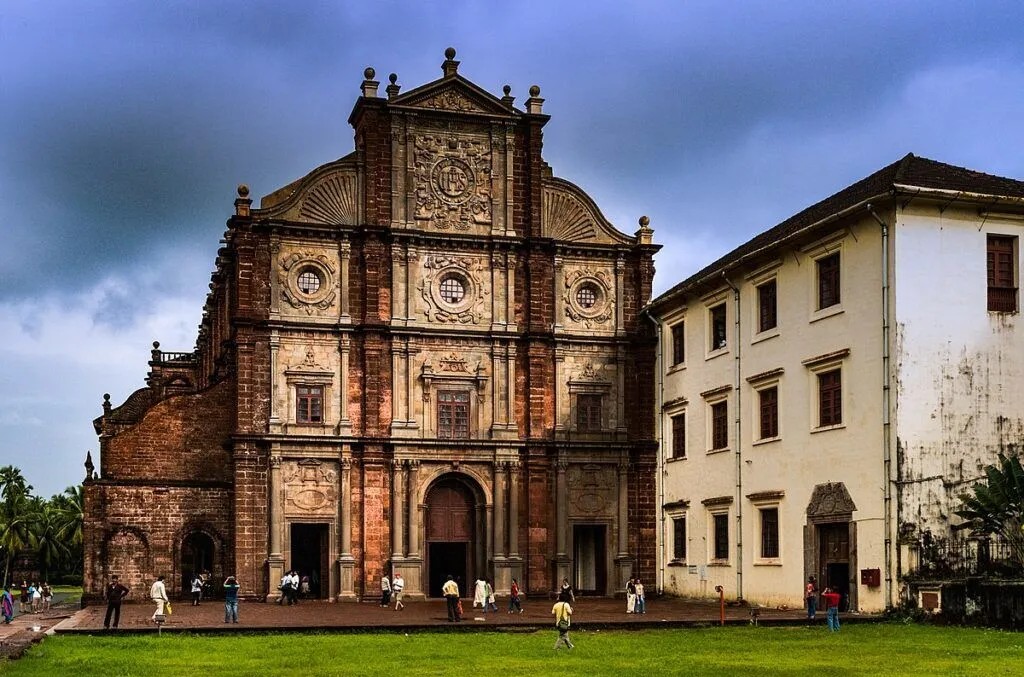
2. Fort Aguada (Sinquerim Beach)
Perched on a cliff overlooking the Arabian Sea, Fort Aguada is a majestic 17th-century Portuguese stronghold. Built in 1612 to guard against Dutch invasions, its thick red laterite walls and massive cistern still impress visitors. The name "Aguada" means watery in Portuguese, a nod to the freshwater spring inside the fort where ships once refilled.
What makes it special:
Today the fort's most famous feature is its historic lighthouse, built in 1864 – one of the oldest in Asia. You can climb up for panoramic views of Sinquerim Beach and the Mandovi River mouth. The fort's multiple levels, hidden tunnels, and cannon bastions are like exploring a medieval castle.
How to get there:
Fort Aguada is in North Goa, about 18 km north of Panaji. The easiest route by car is via NH66; the coastal drive through Candolim is beautiful. Renting a car or hiring a chauffeur is ideal — it leaves you free to stop and enjoy views along the way.
Travel tips:
- The fort is open 9:00 AM–5:00 PM
- Bring sun protection and water
- Best time to visit is late afternoon or sunset
- Watch your step on uneven areas
- Combine with a visit to nearby Sinquerim or Candolim Beach
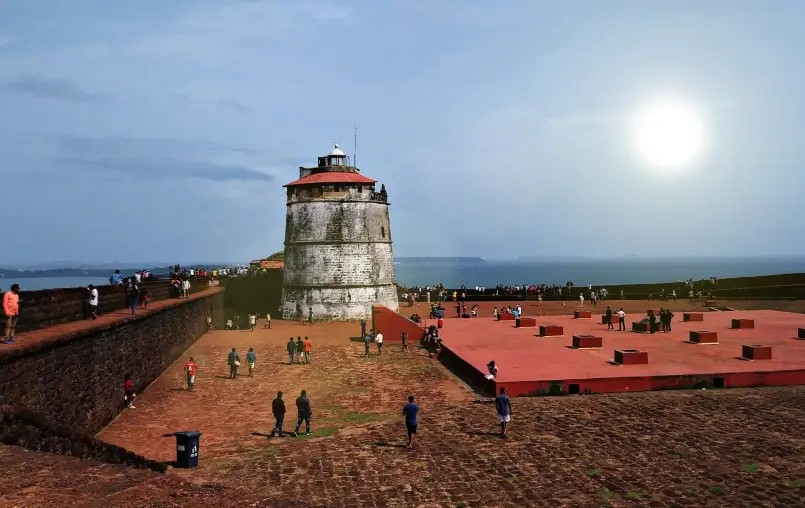
3. Dudhsagar Falls (Mollem)
Hidden in the heart of the Western Ghats, Dudhsagar Falls is Goa's ultimate adventure hotspot. "Dudhsagar" means Sea of Milk, and this four-tiered waterfall lives up to its name. Plunging about 1,017 feet (310 meters) down rugged cliffs, Dudhsagar creates a misty white cascade that looks like milk streaming into a jungle bowl.
What makes it special:
The journey there is part of the thrill. You'll travel through the Bhagwan Mahaveer Wildlife Sanctuary (a UNESCO World Heritage Western Ghats site), and the falls often drop in multiple streams over huge boulders. In the wet season (June–Sept) the waters roar and swell – but note: the road is closed during heavy monsoon rains.
How to get there:
Drive to the village of Mollem or Castle Rock. From Panaji it's about 85 km (roughly 2.5 hours) – you can rent a self-drive car from Panaji and set the GPS to Dudhsagar Falls. The route via NH4A and NH748 is scenic.
Travel tips:
- Best time to visit is October–May
- Be prepared for narrow, winding stretches near Mollem
- Pack swimwear and water
- Check local travel updates for road closures
- Consider joining a guided jeep tour
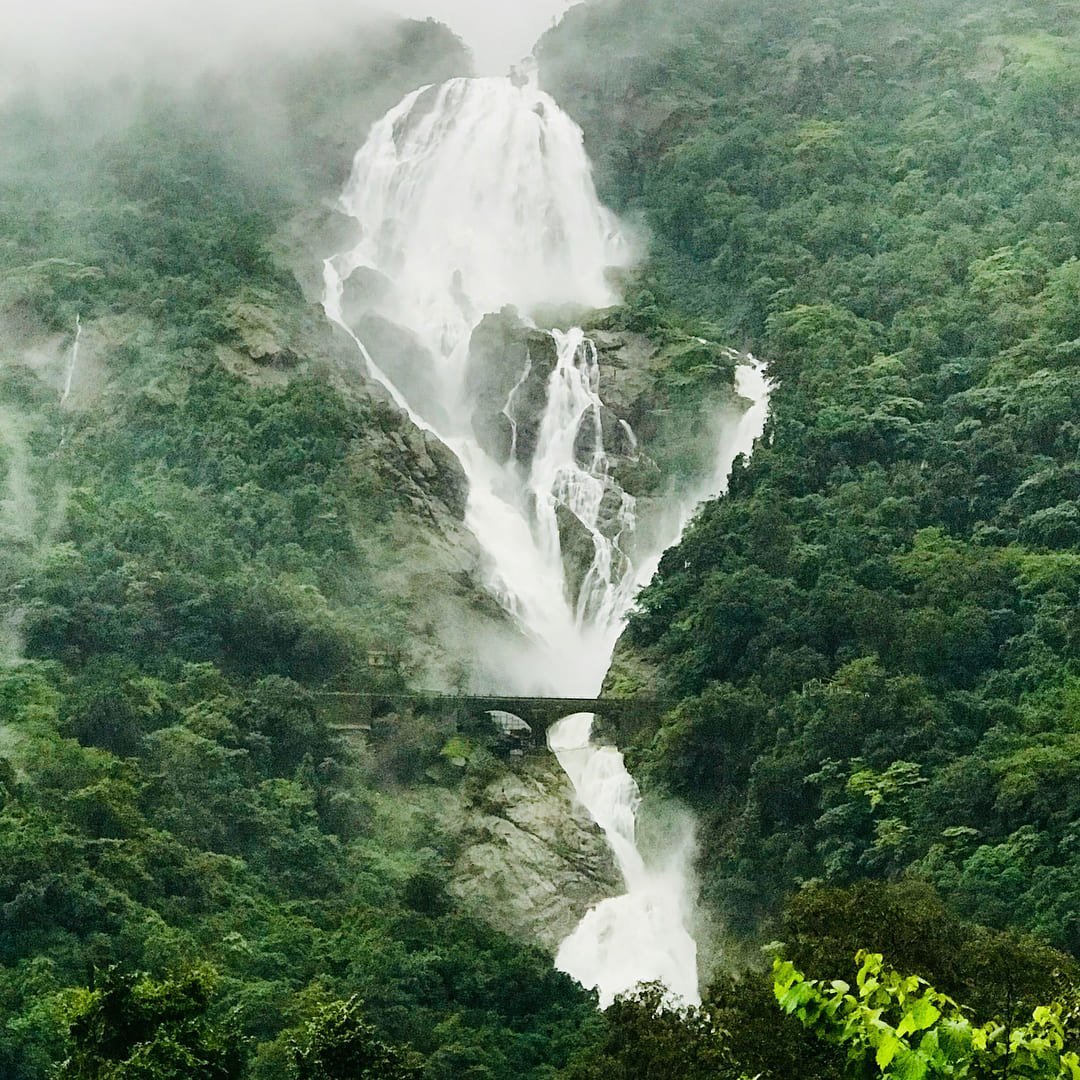
4. Calangute Beach (North Goa)
Calangute is known as the "Queen of Beaches", and once you arrive you'll see why. This golden sand stretch (about 7 km long and 15 km from Panaji) is Goa's busiest beach, packed with colorful parasols, seafood shacks, and action. Think surfing, parasailing, beach volleyball, and lively markets selling everything from sarongs to souvenirs.
What makes it special:
Calangute's energy is legendary. It's a mix of family fun and backpacker paradise: kids play in sand, couples picnic, street vendors grill fish, and DJs sometimes blast from beach bars. Adjacent Baga Beach is within walking distance on one end, giving even more variety.
How to get there:
Calangute is easily reached by road. From Dabolim Airport (about 40 km) or Panaji, you can take NH66 and local roads. The Kadamba buses run frequently, but the simplest option is a self-drive or taxi – this lets you hop to nearby spots as you please.
Travel tips:
- Best time to visit is winter (Nov–Feb)
- Always swim between the red-and-yellow lifeguard flags
- Respect local culture and dress codes
- Don't miss the famous Calangute "Tibetan Market"
- Parking is available near the beach (small fee)

5. Chapora Fort (Vagator Beach)
If you're a fan of Dil Chahta Hai or simply love panoramic views, Chapora Fort will thrill you. This hilltop fort – originally built in 1612 – crowns the village of Chapora. Its modest ruins offer mesmerizing vistas of Vagator, Ozran, and Morjim beaches and the Chapora River mouth.
What makes it special:
Chapora is famous for its top viewing spot (featured in Bollywood) and its romantic atmosphere at sunrise/sunset. The fort's walls and bastions invite adventurous wandering. The hike up is part of the fun – you can drive to Vagator Village and then climb the short trail to the fort.
How to get there:
Chapora is about 10 km from Mapusa and 18 km from Panaji. Drive or take a taxi to Vagator Beach or Candolim, then follow the winding road up. A small parking spot is available near the base of the fort.
Travel tips:
- Best time to visit is early morning or late afternoon
- Wear comfortable shoes for the climb
- Bring water and a camera
- Watch your step on uneven surfaces
- Combine with a visit to nearby Vagator Beach
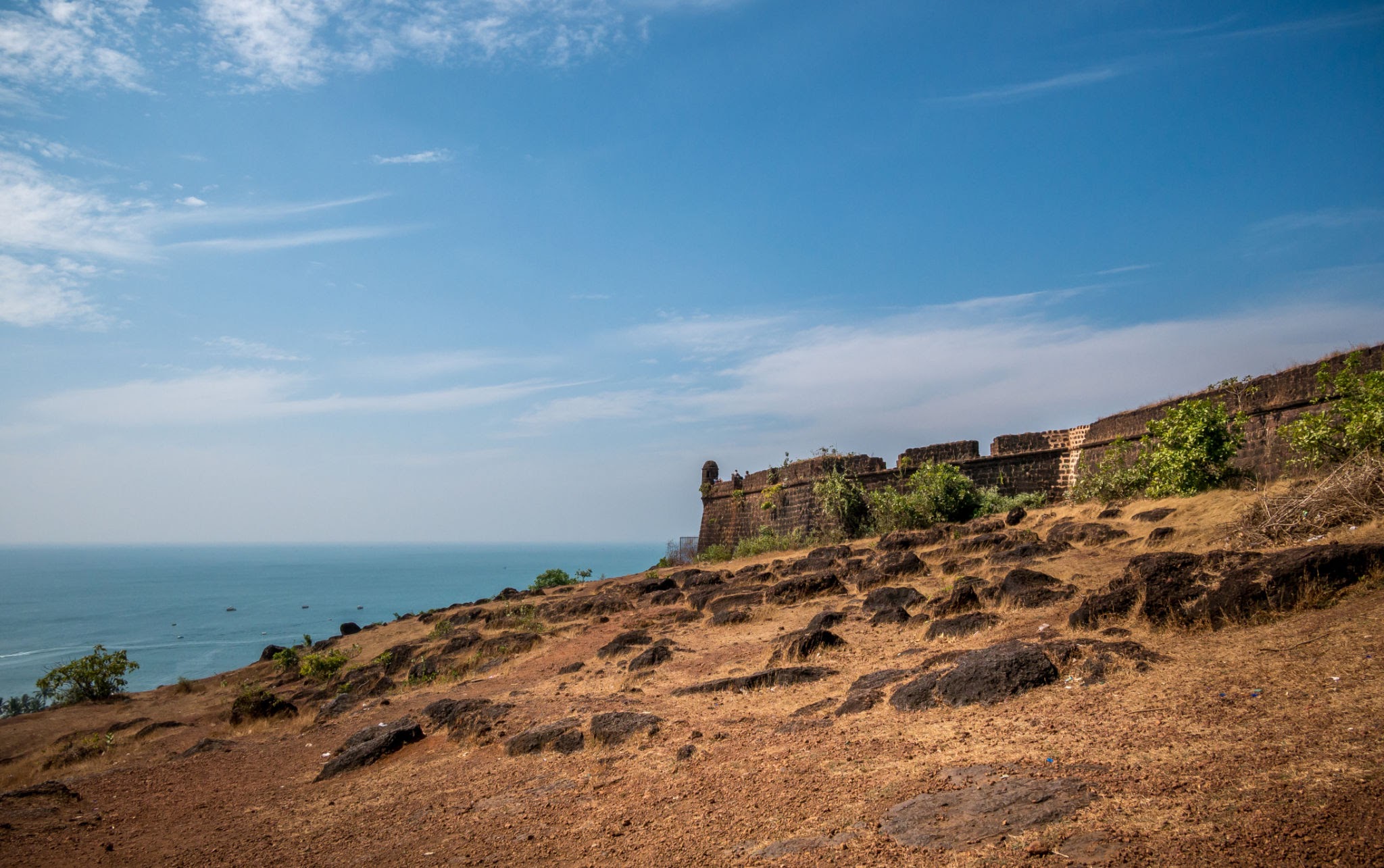
6. Palolem Beach (South Goa)
For a taste of Goa's serene side, head to Palolem Beach in Canacona (South Goa). Palolem is a scenic crescent-shaped bay lined with swaying palms and colorful shacks. It's quieter than North Goa's hotspots and beloved for its gentle swimming waters.
What makes it special:
Palolem has a relaxed, almost tropical island vibe. It's famous for yoga retreats, silent discos on the beach, and bioluminescent plankton that can sometimes be seen at night on moonless evenings. In the day, you'll find kayaks, paddleboards, and dolphin tours departing from the shore.
How to get there:
Palolem is about 40 minutes (around 30 km) from Margao and ~65 km from the airport. The drive through rolling green hills of South Goa is gorgeous. A self-drive rental car or taxi is recommended since public transport options are limited.
Travel tips:
- Check tides if you plan to swim
- Best time to visit is November–February
- Try local delicacies at beach cafes
- Book beachfront huts in advance during peak season
- Respect the beach's relaxed culture
7. Fontainhas (Panjim Latin Quarter)
Back in Panaji (Panjim), the capital city, lies Fontainhas – Goa's charming "Latin Quarter." This historic neighborhood is a UNESCO-recognized heritage zone, where Portuguese influence lives on in rows of pastel-painted villas. Walking Fontainhas' narrow, cobbled streets feels like stepping into old Europe.
What makes it special:
Here you'll find cozy cafés, antique shops, and tiny bakeries hidden behind ornate doors. The architecture is striking: bright mustard-yellow, mint-green, and peach buildings with white trim, decorative balconies, and names dating to Portugal's colonial era.
How to get there:
Fontainhas is in central Panaji. If you've rented a car, you can drive to a parking area near the Latin Quarter. But it's best explored on foot. Start at the Miramar Beach end or from the Panaji church.
Travel tips:
- Best time to visit is early morning or late afternoon
- Wear comfortable walking shoes
- Don't miss the local bakeries
- Great place for photography
- Look for the annual festival decorations
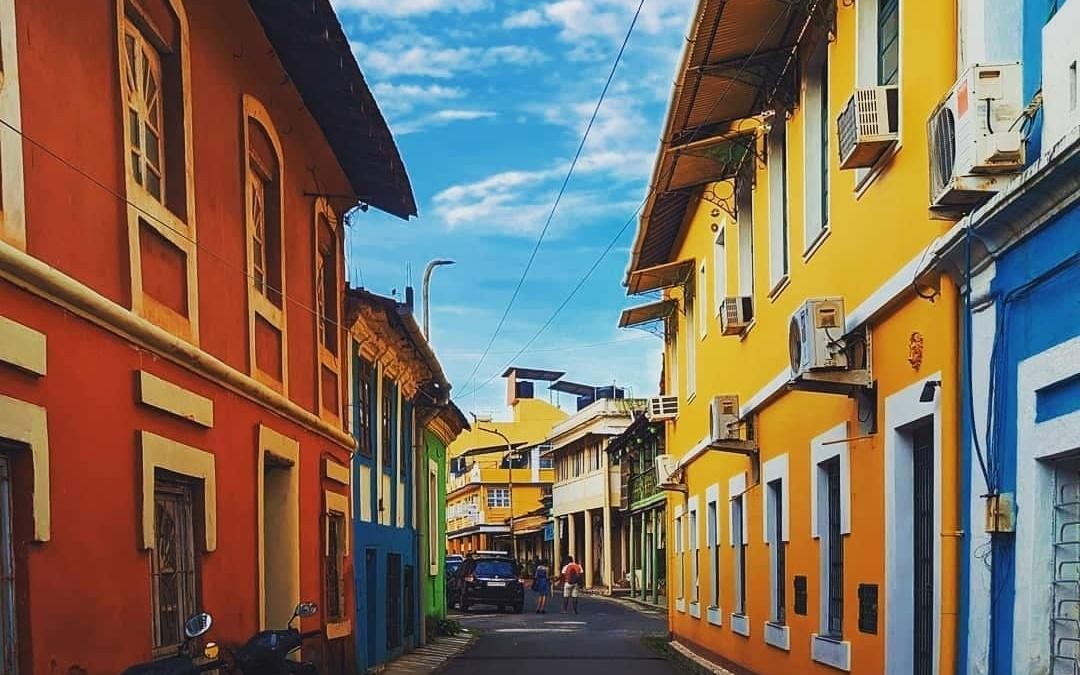
Ready to Explore Goa?
Planning a trip across beaches, forests, and heritage sites is easiest with your own vehicle. Renting a self-drive car or hiring a chauffeur-driven car ensures you can visit all these Goa sightseeing spots comfortably and safely.
Book your car rental in Goa today – hit the road at your own pace, soak up every sunset, and enjoy the freedom of an unforgettable Goan road trip!
Frequently Asked Questions
When is the best time to visit Goa?
The ideal season is November to February, when the weather is warm and dry with cool evenings. This is perfect for beach days and sightseeing. March–May (spring) can be very hot, and June–September is monsoon season (lush greenery and fewer tourists, but some attractions like Dudhsagar Falls may be inaccessible due to rain).
Do I need a car in Goa? How can I travel between places?
A rental car is highly recommended for convenience. While there are buses, taxis, and motorbike rentals, a car gives you flexibility to explore off-the-beaten paths. Many visitors opt for self-drive cars in Goa or chauffeur-driven cars to tour the sights on their own schedule. Remember, in India you drive on the left and an international driving permit is required for foreigners.
Are Goa beaches safe for swimming?
Most popular beaches like Calangute, Baga, and Palolem have lifeguards, but conditions vary. Always swim between the flagged areas and heed local warnings – currents can be strong, especially near rocky coves. Avoid isolated spots at night. For families, beaches like Palolem (gentle waters) or Colva (south Goa) are good choices. Apply sunscreen generously and drink plenty of water – the tropical sun is strong!
What should I pack for a Goa trip?
Pack light, breathable clothes (cotton/linen), swimwear, a hat, and sturdy sandals. Don't forget sunscreen, insect repellent (for evenings by the forest or river), and a reusable water bottle. If you plan to rent a car, bring a valid driver's license (with international permit if needed). Evenings can be cooler in winter or in the hills, so a light sweater is useful. Also, a universal adapter for electronics and some cash (small notes) for street vendors are handy.
Is Goa safe for solo travelers and families?
Overall, Goa is relatively safe – the people are friendly and it's a major tourist hub. Basic precautions apply: keep an eye on your belongings at crowded places, drink responsibly (road accidents increase after late-night parties), and follow beach safety. Many families and solo travelers come to Goa each year without issues. Using a reliable car rental or taxi service adds a layer of security when moving around.
Other Articles
Stay Updated
Get the latest travel tips and car rental updates directly in your inbox.



